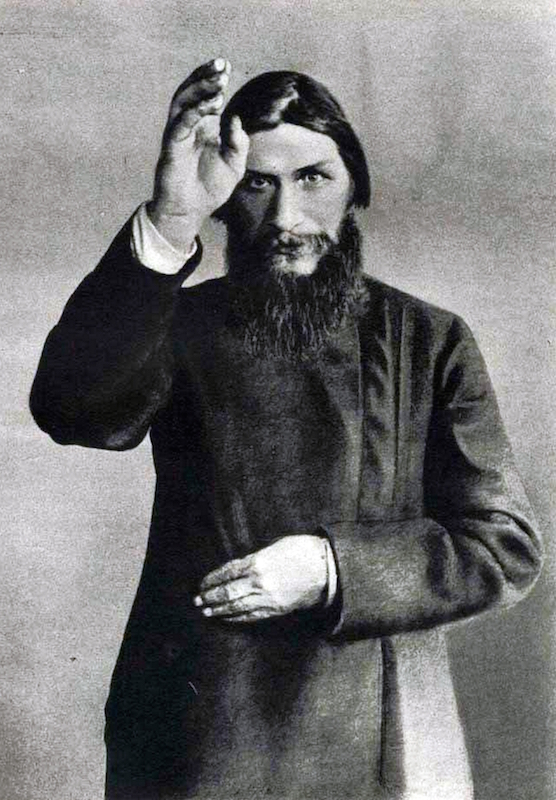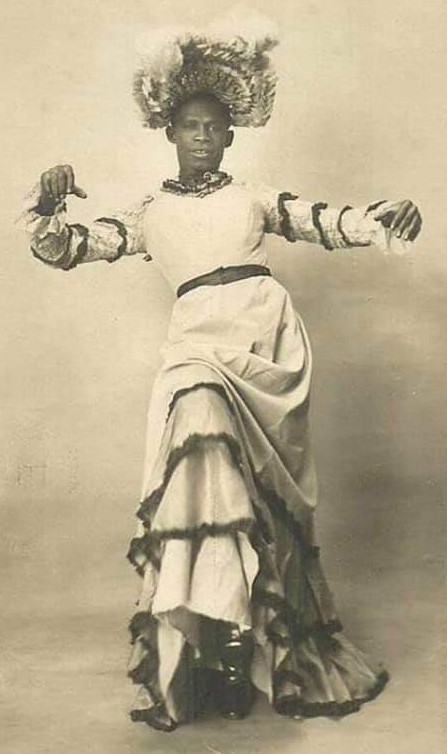
Imagine, for a moment, if you will, that you’re watching the (fantastic) animated film Anastasia, right? And at the end of the movie, the credits roll, and then you see the disclaimer that tells you that it was fictional and none of the characters were intended to be like real people. You probably roll your eyes and chuckle a little — obviously Rasputin didn’t have a talking bat sidekick, right? But what you probably didn’t know is that that disclaimer is actually kind of a piece of queer history at play, and that it’s partially due to Rasputin that it’s there at all. But mostly it’s because of Prince Felix Felixovich Yusupov, Count Sumarokov-Elston.
Felix was born on March 23, 1887 in the Moika Palace in Saint Petersburg, Russia. His mother Zinaida Yusupova was last of the incredibly wealthy Yusupov family, and his father was Count Felix Felixovich Sumarokov-Elston. The Yusupovs had more money than the Romanovs who, y’know, ran all of Russia. They had four palaces in Saint Petersburg along, three palaces in Moscow and 37 estates elsewhere in Russia. Not just old money sitting around gathering dust either — they were raking it in with coal mines, iron mines, oil fields….all kinds of industries that were booming at the time. So, the point I’m trying to drive home here is….he was born into money. He just had to inherit it.

Standing in the way of that inheritance was his older brother Nicholas Felixovich Yusupov. Nicholas was a lady’s man and a womanizer, but someone Felix looked up to as a child — but was also deeply jealous of him. According to Felix’s memoirs Lost Splendour, Felix lost his virginity while abroad with his family in Contrexeville, France in a chance encounter with an Argentinian man, who’s name never came up, and his girlfriend when he was still pretty young. He confided the experience to Nicholas, but — to Felix’s frustration — his elder brother ignored him, convincing Felix to keep such stories to himself in the future. (I think it’s relevant to note that, whenever this encounter comes up in his memoirs it is always the Argentinian man he talks about and the woman is just “his girlfriend.”)
Felix also soon discovered a penchant for dressing in women’s clothes for parties — he discovered he enjoyed the clothes, and the attention he received from men. Nicholas encouraged this, and brought Felix — in dresses — out to debaucherous parties with him. He began performing in drag at a cafe in Saint Petersburg called The Aquarium — until his mother recognized him during one of his shows that she happened to attend. Although the scandal was kept secret, it ended Felix’s performance career. He continued to dress in drag for parties, however, until his father learned of these “pranks” and furiously threatened to send him to a Siberian convict settlement.
Nicholas was killed in a duel at 26 years old on June 22, 1908. The duel, which was over the affections of a married woman, was something of a surprise to most of the family — Felix, however, had been warned about it (by the woman in question) well in advance and made no moves whatsoever to prevent it from happening. As a result, Felix no longer had to split the family fortune. And before you say I’m being cynical, I present to you this excerpt from Felix’s own memoirs, immediately following his brother’s death: “The thought of becoming one of the richest people in Russia intoxicated me.”
Although Felix clearly came out ahead, there were a lot of people who lost in that duel. Nicholas died. The married woman left her husband and joined a convent, so he still lost his wife. Felix’s mother battled severe depression for the rest of her life, brought on by the death of her eldest son. And then there’s Maria Golovina, a woman who had been in madly love with Nicholas and mostly ignored by him. She latched onto Felix as, essentially, her new best friend to help her through grieving. Her family, however, decided she needed “professional help” from self-proclaimed holy man Grigori Rasputin. When they met, Felix was not impressed by Rasputin, and immediately believed him to be a depraved con artist, writing “The young woman was too pure to understand the baseness of the ‘holy man.'”

From 1909 to 1912, Felix attended University College at Oxford, studying forestry and English. He was essentially forced there by his family, who believed it would help ground him. Not so much. While there, he did found the Oxford Russian Club, which was something I suppose, but Felix was still living extravagantly. He was a member of Oxford’s Bullingdon Club — which was basically a dining club for rich boys — and employed a full staff at his residence, including a chef, a valet, a housekeeper, as well as housing numerous pets including a bulldog, three horses, a bear cub, and a macaw. According to the University College Oxford website, he spent more money while attending the school than almost any other student. He spent most of his free time partying with friends like Oswald Rayner (remember that name!), and ultimately became very good friends with pianist Luigi Franchetti and Jacques de Beistegui. I’m hesitant to say that there was anything physical or romantic about his relationship with either, because I can’t find any information about who they were outside of what I’ve just said, but they did both move into his English home at 14 King Edward Street. I’m not saying anything definitive but there’s an awful lot of people (and animals) in what is, by all outside appearances anyways, not a particularly large residence. Little bit crowded in there even if people are sharing beds, that’s all I’m saying.
Anyways, in 1912 Felix returned to Russia without graduating, writing that he was too busy in Russia to return to school. He developed a relationship with Grand Duke Dmitri Pavlovich — something heavily implied in his own memoirs to be more than a friendship, but less than a romance. There’s no evidence that Dmitri felt the same way about Felix. Felix rejected the advances of one of Dmitri’s friends, and Dmitri was sent elsewhere — effectively ending whatever their relationship may have been for the time being. Felix was pretty quickly married off to Princess Irina Alexandrovna, the only neice of Tsar Nicholas II. Their wedding was on February 22, 1913 and although the wedding was described as modest, don’t worry, it’s not a “real people” version of a modest wedding — Irina was wearing a veil that had once belonged to Marie Antoinette. You know, nothing like getting “something borrowed” and “something old” out of the way at the same time. For their honeymoon they went to Jerusalem, London, and Bad Kissingen in Germany.
They were both still in Germany when World War I began in August of 1914. They were detained in Berlin. Because European royalty is pretty much all one really weird family tree, Irina reached out to her relative the Crown Princess of Prussia to try to help them get back to Russia, but Kaiser Wilhelm II was not about it, and instead offered them their choice of one of three German estates to reside in for the duration of the war. However, Felix’s father intervened by way of the Spanish ambassador to Germany, and the newlyweds were allowed to return to Russia as long as they went there by traveling through Denmark and Finland.

On March 12, 1915 Irina gave birth to their first and only child — a daughter named Irina Felixovna Yusupova — nicknamed Bébé. Irina and Felix found they were both utterly incapable of actually taking care of a child, and so Felix’s parents did most of the parenting. Nevertheless, Bébé was very close with her father and quite distant from her mother. This was probably because Felix and his parents spoiled her rotten. There’s also a distinct possibility that Irina wasn’t thrilled with Felix’s, in his words, “love affairs of a special kind” which were, y’know, with men. He once wrote “One may censure those relationships but not the creatures for whom normal relationships against their nature are impossible.”
Around this time, Felix decided to use some of his vast fortune to help out with the war, converting part of Liteyny Palace into a hospital for soldiers. Felix did not have to actually serve as a soldier because there was a law that stated only sons did not have to serve — nevertheless in February 1916 (after a scathing letter from the Grand Duchess Olga to Tsar Nicholas II called him a “downright civilian” and “a man idling in such times”) Felix began attending the Page Corps military academy.
Meanwhile, concern began to grow that Russia would concede to Germany in the war. Part of this was due to Russia’s economic decline, which many people — particularly those loyal to the monarchy — blamed, at least in part, on Grigori Rasputin and his undue influence with the tsar’s wife Alexandra Feodorovna. Felix, for his part, remained convinced that Rasputin was drugging the tsar in order to slowly weaken him and eventually make the tsarina the regent even at the time of writing his memoir.
What actually transpired is a bit of a mystery. While the official accounts, as told by Felix and his cohorts, match up with each other reasonably well albeit not perfectly, the autopsy reports tell a drastically different story. And further evidence from British Intelligence indicates yet a third different story. But since this is an article about Felix, I am going to focus on his version of events as explained in his memoirs.
It was little wonder that when he received a letter from Vladimir Purishkevich proposing that Felix join him and the Grand Duke Dmitri Pavlovich (whom Felix still pined for) in assassinating the Rasputin, that Felix joined in eagerly — although he insisted on being involved in mapping out the scheme itself. Purishkevich also recruited Doctor Stanislaus de Lazobert and contacted Samuel Hoare at the British Intelligence Service, which is perhaps why MI6 operative and Felix’s college-friend Oswald Rayner visited with Felix a number of times the week that the plot unfolded. Meanwhile, Felix recruited lawyer Vasily Maklakov and an army officer named Sergei Mikhailovich Sukhotin, who was recuperating from an injury sustained in the war.

Felix worked through his friend Maria Golovina, who had introduced him to Rasputin years before, to ingratiate himself to the tsarina’s advisor. It was quite successful and easy — particularly laying the trap. Felix lured Rasputin in with an invitation to the Moika Palace, with a promised invitation to meet his wife Irina, who was actually in Crimea at the time. Dr. Lazovert prepared cyanide crystals, sprinkling them over the tops of cakes and leaving some to be poured into Rasputin’s drink. Lazovert was convinced that it was enough cyanide to instantly kill several men.
Felix brought Rasputin to his home, all of his other cohorts hiding upstairs from the dining room. encouraged Rasputin to partake of the cakes and poured him three poisoned glasses of wine. The cyanide, however, had no effect discernible effect (though the wine slurred his speech.) Excusing himself, Felix went upstairs to discuss this surprising lack of a turn of events with his friends, and they ultimately determined the next course of action had to be to shoot Rasputin. Upon returning to the room, Felix shot Rasputin in the chest. Dr. Lazovert rushed in and, after a brief examination, determined he was in fact dead.
The last part of the plan involved Sukhotin bringing Rasputin back to home, so as to avoid arousing suspicion. However, as they prepared to do so, Rasputin leapt to his feet and charged at Felix — who was forced to hit Rasputin with a rubber club to escape his grasp. Rasputin began crawling out the door into the courtyard, and disappeared into the night. Purichkevich fired two shots into the dark after him. They pursued Rasputin into the courtyard, and Purichkevich shot him two more times.
The gunshots, of course, aroused police suspicion. Felix tried to convince the investigating police officer that it was just a drunken friend firing a gun — but Purichkevich proclaimed that he had killed Rasputin. The police officer agreed not to turn them in. After all of this excitement, Felix passed out and his servants put him to bed. He was later told that Dmitri, Sukhotin, and Lazovert took Rasputin’s body, wrapped it in linen, placed it in a car, drove it to a bridge, and dumped it in the water (breaking the ice as they did).
Although that police officer did not report Purichkevich’s confession, the police investigating Rasputin’s disappearance found the unusual gunshots happening at the same night, at the home of someone acquainted with the missing person to be suspicious. Felix was questioned the next day. The police let Felix go, as he repeated the story about a drunk friend, but rumors flooded Saint Petersburg that Felix had killed Rasputin at the Moika. The tsarina ordered the police to search the Moika — but, because Irina was a Romanov, such a search could only be ordered by the tsar himself. A lucky break, as it gave Felix and his servants time to clean up all of the blood. After that task was completed, the conspirators met for lunch to decide on a story. They all agreed to stick to the story Felix had already told the police.
Though they stayed with this story, and were questioned without arrest a handful more times, Felix and Dmitri were forbidden from leaving Saint Petersburg. The tsarina was already calling for their execution, despite no evidence linking them to a crime. The body took days longer to recover, but it was eventually found. Police were sent to protect Dmitri and Felix, who had made things easy on both their protectors and the multitude of people who wanted to kill them by taking up residence in the same palace. As much as that must’ve been nice for Felix, as I said before, there’s no evidence Dmitri returned his feelings and at this point they were both pretty focused on the aftermath of the assassination they’d committed.
Now, the autopsy of the body revealed a lot that doesn’t add up to Felix’s version of events. They found Rasputin had been shot by three different guns — one of which was the standard issue for British Intelligence operatives. The same type of gun, in fact, carried by Oswald Rayner. (Although the memoirs note that Oswald was aware of the plot to kill Rasputin, it only mentions him checking in on Felix the day after the murder.) The examination of the body also indicated that Rasputin had been severely beaten, and that someone had tried to castrate him. Tried, and failed — not sure how that works but okay. None of that was mentioned in Felix’s story and that lends some credence to the theories that he wasn’t actually involved at all.
Anyways, unable to find evidence proving anyone else killed Rasputin, and unable to find enough evidence they had killed Rasputin, Dmitri and Felix were exiled from Saint Petersburg. Dmitri was sent to Persia, ordered to remain there under the supervision of the military general commanding troops there. Felix was sent to his family’s estate in Rakitnoye. (It helps to have like forty residences, right?) Felix was really heartbroken to be separated from Dmitri. I guess he thought after they assassinated one of the most influential people in Russia, he and Dmitri would live together forever?
This was January of 1917, however. So anyone who knows Russian history at all knows what’s about to happen to the tsar who ordered that exile. The February Revolution began on March 8, by March 12 buildings in the capital were ablaze and by March 15, Tsar Nicholas II had given up the throne of Russia. This ended Felix’s exile from Saint Petersburg but overall made things very complicated for him. His wife was a Romanov, but most of the population thought Felix was a revolutionary because he’d murdered Rasputin. He spent some time kind of playing both sides, clearing out valuable possessions from his family estates, trying to keep below the radar of the new provisional government (who were very much trying to keep an eye on him) and trying to help the imprisoned Romanovs with whatever influence he still had. When the Bolshevik government fully came into power, Felix and Irina headed to Yalta to stay even further below the radar — but be closer to one of the places where some of the Romanovs were being kept in the hopes of somehow improving their situation.

However, when that proved impossible, Felix and Irina went into permanent exile from Russia. They traveled to Italy, but ultimately settled in Paris, France. They began a couture fashion house called IRFE, and Felix became known for his charitable giving towards France’s Russian immigrant community. He published his memoirs, Lost Splendour: The Amazing Memoirs of the Man Who Killed Rasputin in 1928. Rasputin’s daughter promptly sued him, but the case was dismissed as the French courts had no interest in dealing with a political assassination that had occurred in Russia in any capacity whatsoever. The stock market crash of 1929 (and some poor financial decisions Felix had made) led to IRFE being closed.
In 1932, Felix and Irina sued MGM for invasion of privacy and libel for their portrayal of Irina (as “Princess Natasha”) in the film Rasputin and the Empress. In the film, Princess Natasha is seduced by Rasputin. The English courts sided with the Yusupovs and awarded them $127,373 in damages (over $2 million when adjusted to today’s values!) The court specifically mentioned that text appearing at the beginning of the movie made it seem like it was intended to be a retelling of actual events and worked against MGM’s arguments. As a result, MGM began attaching a disclaimer to each of their films, declaring it as a work of fiction with no intended similarity to any person living or deceased. Numerous other studios followed suit — and to this day, that boilerplate disclaimer shows up on almost every American movie. He was involved in a handful of other, less consequential lawsuits over the next few decades and Felix passed away on September 27, 1967.
Felix remains somewhat of a controversial figure — not because it’s his fault that movies have to explain that they’re fictional in a disclaimer, and not just because he may have murdered Rasputin. Also because, I’m sure you guessed this, his sexuality is often called into question. Per usual, a lot of historians claim he could not have been bisexual. His Wikipedia page even falsely claims that he outright denied being bisexual in his memoirs. I just read his memoirs for this article, they’re available online for free right here. The closest I found to any such denial is this quote: “I have often been accused of disliking women. Nothing is further from the truth. I like women when they are nice.” Nothing about that is a denial of bisexuality especially since right before it is this statement: “I thought it quite natural to take my pleasure wherever I found it, without worrying about what others might think.”
So there you have it, the story of Russia’s bisexual, drag-performing, accidental revolutionary, clumsy assassin prince and how he changed both Russian history and cinematic history forever.



















